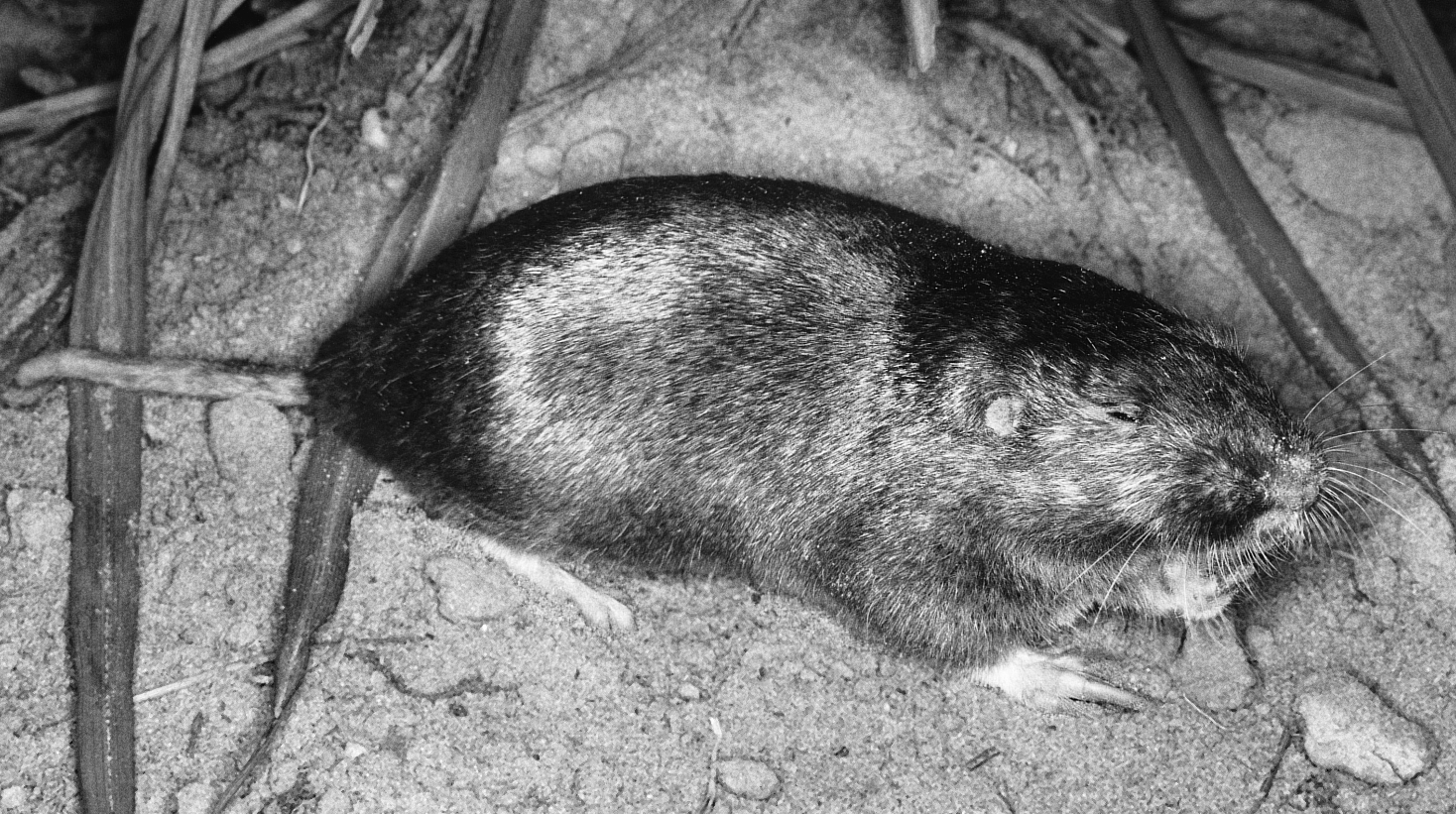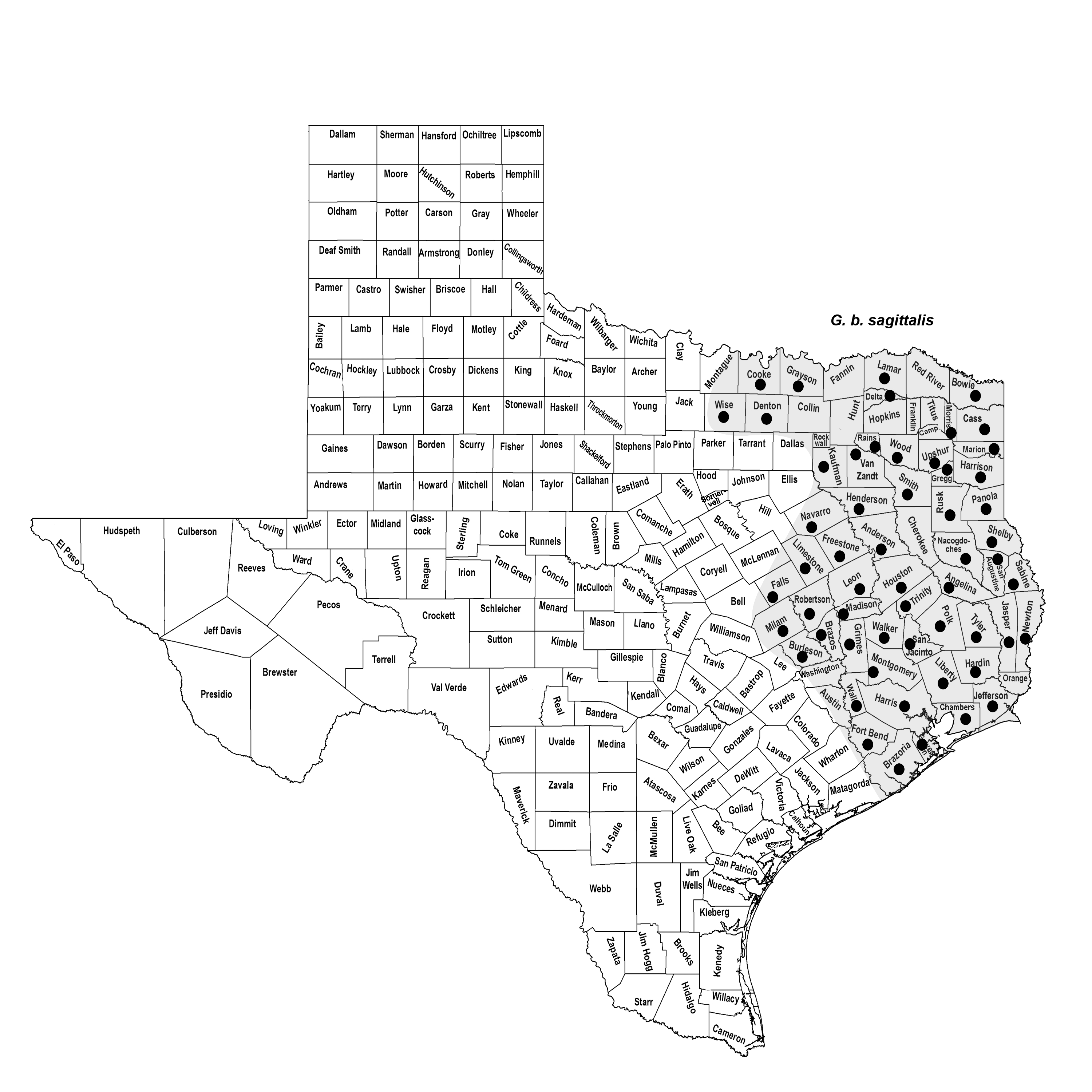BAIRD'S POCKET GOPHER
Geomys breviceps Baird 1855
Order Rodentia : Family Geomyidae
DESCRIPTION. Nearly identical in appearance to G. bursarius and G. attwateri. Morphologically, this species may be distinguished from G. bursarius by cranial characters described in the account for G. attwateri, but it is not readily distinguishable from G. attwateri without genetic testing. Dental formula: I 1/1, C 0/0, Pm 1/1, M 3/3 × 2 = 20. Averages for external measurements: total length, 208 mm; tail, 61 mm; hind foot, 26 mm.
The most important feature for identifying this pocket gopher is its karyotype, which has a diploid number of 74 and a fundamental number of 72. Geomys breviceps has four more biarmed elements in the autosomal complement than does G. attwateri. Compared with G. bursarius, G. breviceps has two more chromosomes. Geomys breviceps is smaller than both G. attwateri and G. bursarius.

DISTRIBUTION. This pocket gopher is found in the eastern portion of Texas. The westward limits of its range in the state are from Falls County north to Wise and Cooke counties and southeastward along the Brazos River to Brazoria County.

SUBSPECIES. Geomys b. sagittalis.
HABITS. The habits of G. breviceps are essentially the same as those described for G. bursarius. This gopher is common in suitable soil types of the Post Oak Savannah and Pineywoods regions.
These pocket gophers are polygamous, but breeding is restricted to immediate neighbors. The annual reproductive cycle in eastern Texas shows seven consecutive months of breeding activity, from February until August. A peak in production occurs in June and July and a lesser peak in April; no young are produced from September through January. Litter size is one to six, with an average of two or three. Females may produce two broods annually. The gestation period is 4–5 weeks and lactation lasts 5–6 weeks, after which the young leave the parental burrow. Young females may reach sexual maturity and produce a litter before the end of the breeding season.
Cellulose-digesting bacteria are known from the cecum and large intestine of G. breviceps, which may allow winter feeding on stored, underground rhizomes. Also, these pocket gophers re-ingest fecal pellets, which apparently increases the efficiency of food utilization.
POPULATION STATUS. Common. Baird's pocket gopher has declined dramatically in the coastal prairies around the western edge of Galveston Bay. Land clearing and land subsidence have removed many of the low mounds characteristic of the coastal prairie at the turn of the century, and this gopher no longer occurs around Clear Creek and toward Houston. However, to the north, it appears to be doing well.
CONSERVATION STATUS. The IUCN lists Baird's pocket gopher as a species of least concern, and it does not appear on the federal or state lists of concerned species. Southern populations of this species bear monitoring.
REMARKS. Recent records for this species from Denton, Grayson, Cooke, and Wise counties extend the distribution westward into the known range of G. bursarius. This range extension warrants further study to determine possible hybridization between the species.
From The Mammals of Texas, Seventh Edition by David J. Schmidly and Robert D. Bradley, copyright © 1994, 2004, 2016. Courtesy of the University of Texas Press.
Natural Science Research Laboratory
-
Address
Museum of Texas Tech University, 3301 4th street, Lubbock, TX 79409 -
Phone
806.742.2486 -
Email
nsrl.museum@ttu.edu

